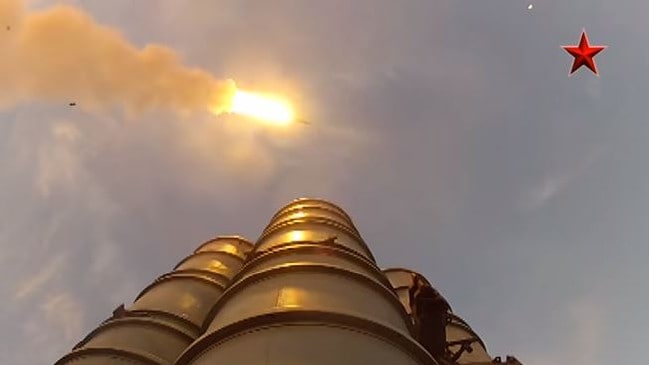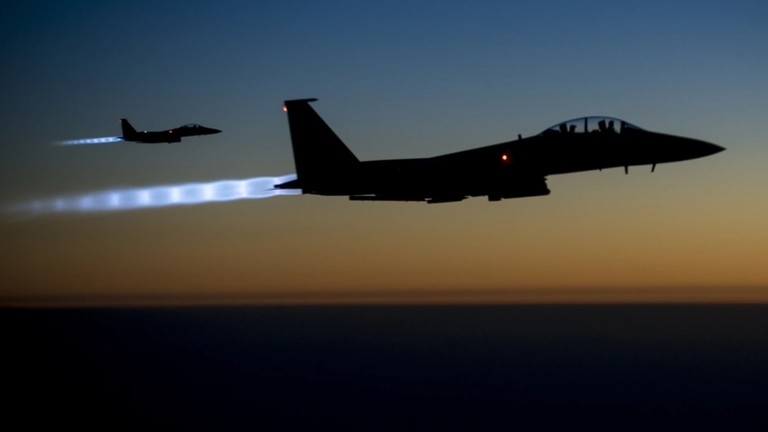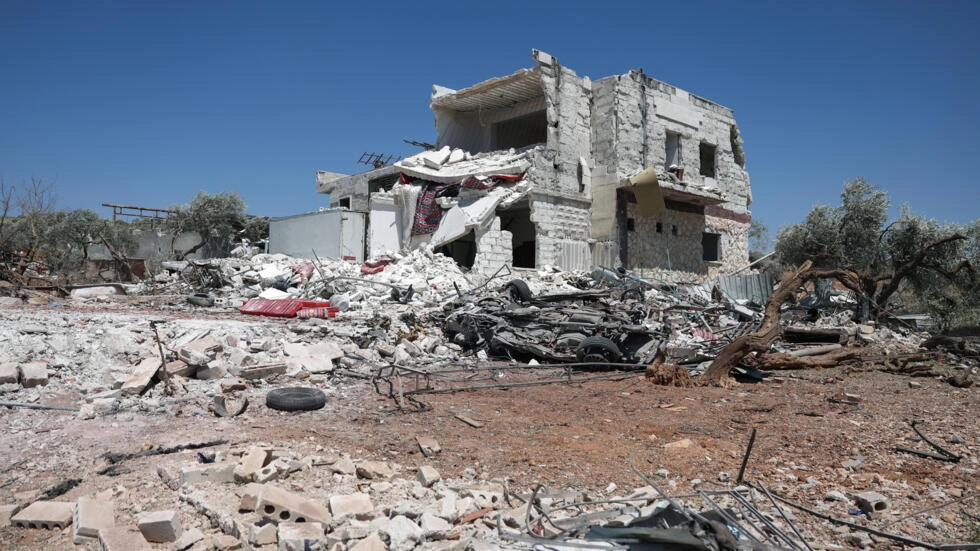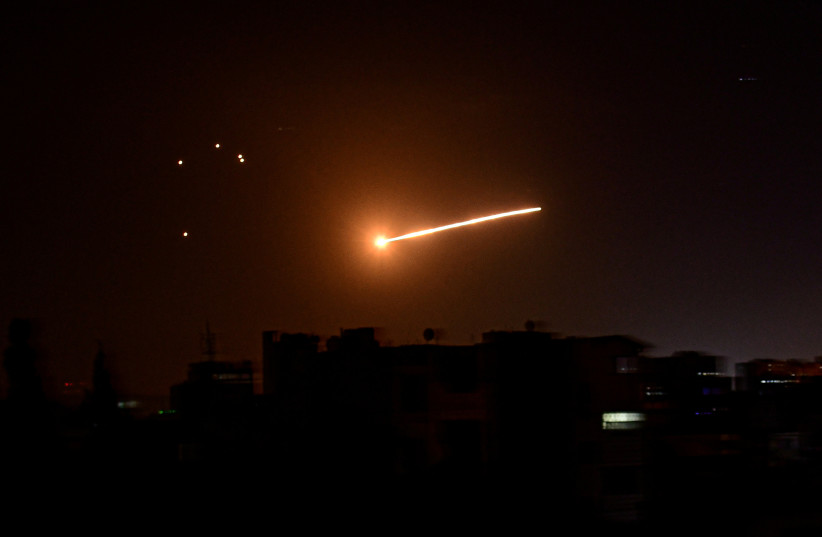This article is more than
6 year oldRussia’s just made a secret delivery to Syria. What does the smokescreen hide?

RUSSIA responded an attack on Syrian chemical weapons facilities by the US, Britain and France last week by promising to supply the rogue state with advanced new missiles.
Moscow insisted there would be consequences.
But the only action it detailed was supplying President Bassar al-Assad with better air defences.
It may be in the process of delivering.
Unconfirmed reports suggest cargo ships have docked at the Russian naval base of Tartus on the Syrian coast.
This in itself is not unusual.
They are deploying smoke screens while unloading at the Russian port in Tartus.
— Wael ?? (@WaelAlRussi) April 18, 2018
If that means anything.
What is odd is that, according to pro-Syrian regime sources, they’re unloading their cargo in secret — under the cover of smoke and aerosol gas intended to block prying eyes, satellite and drone sensors.
What the ships are carrying is unknown. They have been tracked by military analysts and watchers passing through the Black Sea and the Bosphorus Strait into the Mediterranean in recent days.
Recently loaded in Novorossiysk. Heavy equipment is always loaded in the hold pic.twitter.com/xtWp5YLuKB
— Bender Az-Rodriges (@Edward_Sn0wden) April 18, 2018
Note how the USAF Global Hawks are keeping an eye on the loading-unloading process pic.twitter.com/YDTz38GKT6
— Wael ?? (@WaelAlRussi) April 18, 2018
But speculation is rife they may be delivering advanced S-300 interceptor missiles, their radars and heavy wheeled transports. Such a weapon system, while one generation behind Russia’s state-of-the-art, could dramatically increase Syria’s ability to shoot down Western (and Israeli) missiles — and combat aircraft.
If proven correct, this would represent another escalation in the drawn-out conflict wracking the Middle Eastern nation.
Russia has already reportedly sold the S-300 to Iran. A standard unit is capable of launching up to six of the missiles, each able to be guided some 200km towards its target.
A much older, but recently upgraded, Russian missile system was last month used by Syria to damage an Israeli F-16 fighter jet as it engaged in a strike run over its territory.
Israeli media is reporting analysts and former defence officials as saying there can be only one response to Syria posessing state-of-the-art S-300 missiles: Blowing them up.
Such an act could threaten to escalate the seven-year-old civil war, and widen the conflict to neighboring states - as well as Russia and the United States.

In February it was reported up to 200 Russian mercenaries were killed or wounded after US forces counterattacked to defend a facility its troops shared with rebel and Kurdish forces near the Euphrates city of Deir Ezzor.
RELATED: What we know about Russia’s Su57 stealth fighter
Later, Moscow deployed at least two of its most advanced stealth fighters to the airfield it controls near Tartus, named Kmeimim. This raised fears of yet further confusion leading to clashes between Russian and Coalition forces.
Keywords
Newer articles
<p>The British singer/songwriter/DJ will perform at Warner Theatre on May 16.</p>
For Putin, Gaza is an endless gift
TikTok Ban Sparks Lawsuit Pitting National Security Concerns Against First Amendment Rights
Bombshell new theory on Titan sub disaster
Russia pounds Ukraine with biggest airstrikes in weeks
Woman'sCanadian citizenship revoked after 32 years amid 'error'
‘Orange turd’: Porn star’s swipe at Trump
WWE icon ruthlessly axed after 32 years
Justin Bieber announces huge personal news
Netflix edits out awkward Kim moment




